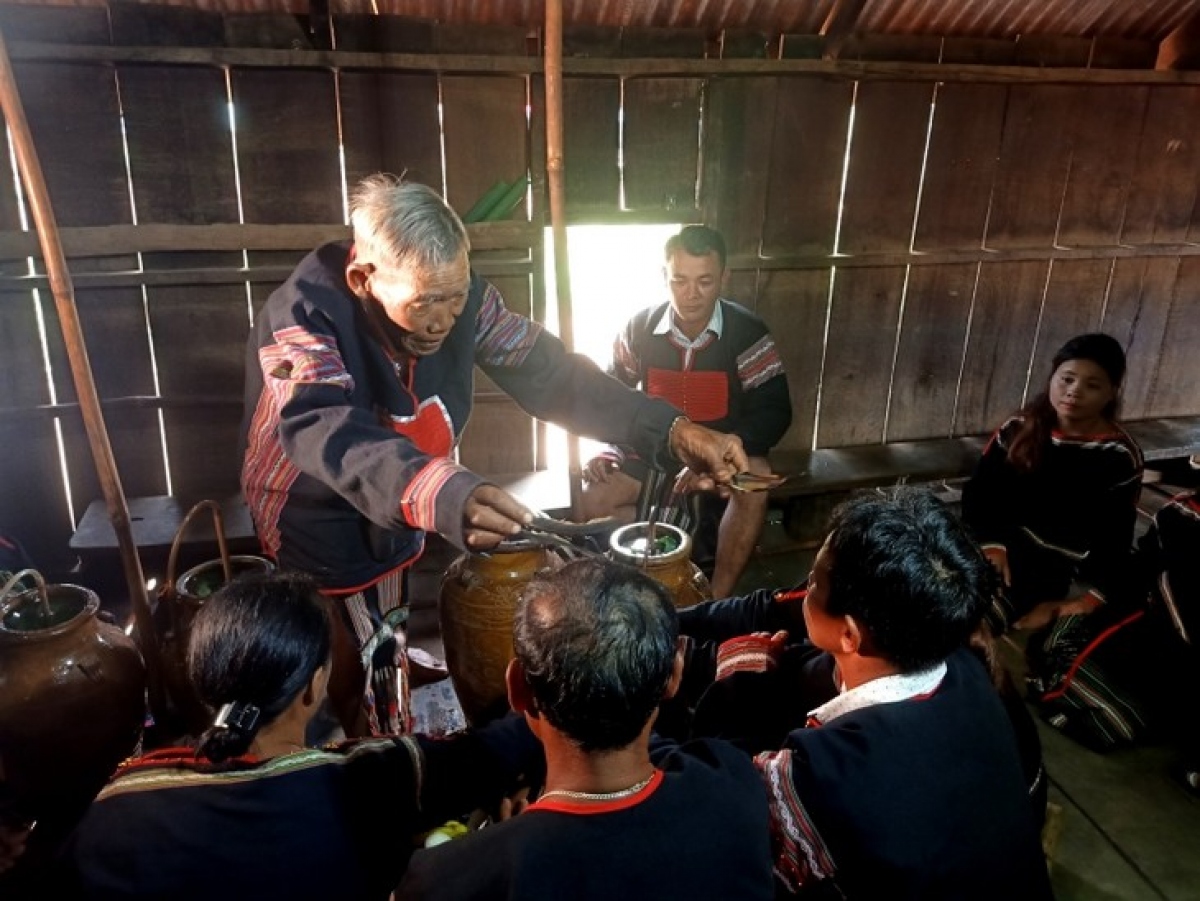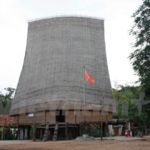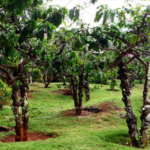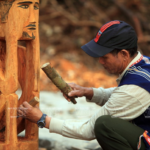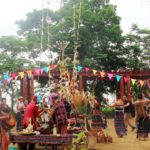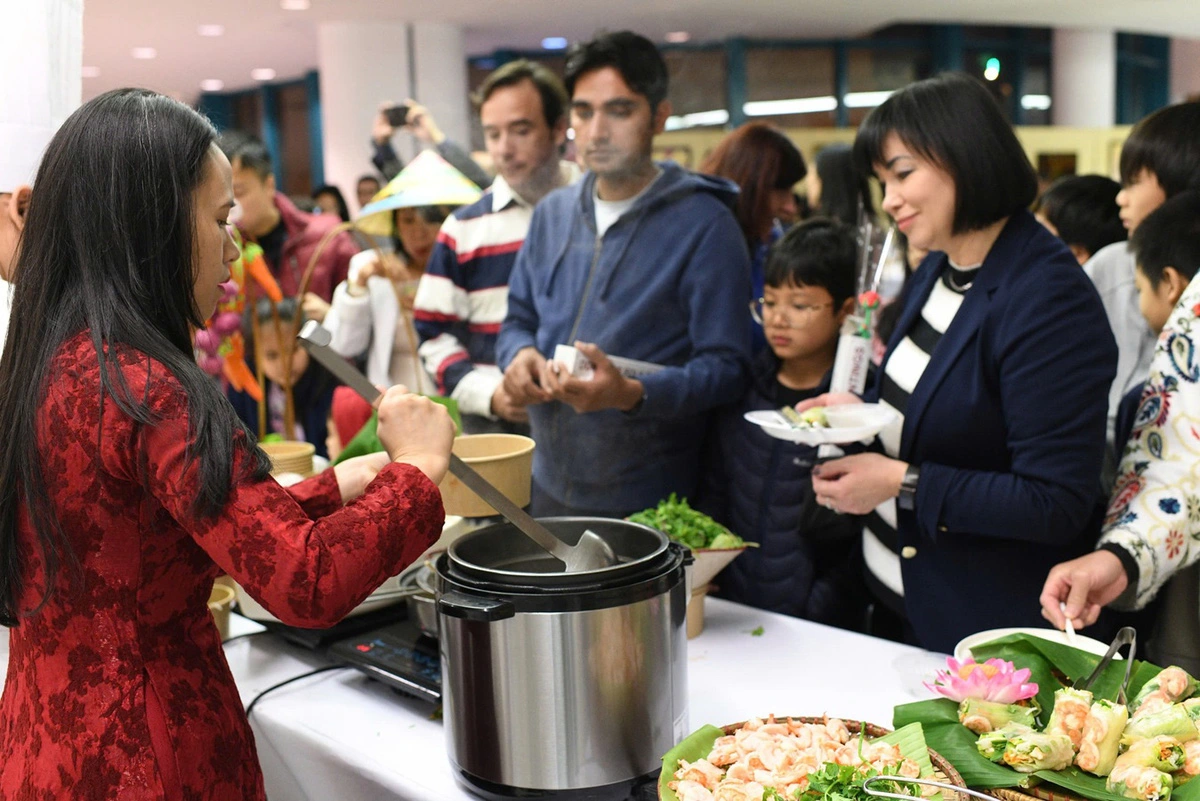The stilt house of Y Thien Cil of Jie Yuk hamlet is cheerful with a chưng bor melody and the prayers of a shaman inviting deities to the twinning ceremony of Y Thien Cil and Y Nam Pan Ting. They have been close friends for many years and after the blood oath they will be blood brothers.
The offerings are pork, steamed glutinous rice, bananas, eggs, a rooster, two brass bracelets, and two strings of glass beads. The two men and their wives sit in front of the offerings.
Village chief Y Krai Cil is the shaman conducting the ritual: “Today the two men will swear an oath to become blood brothers. They have had a close relationship for a long time. I conduct this ritual to wish them good health and true brotherhood. If one experiences difficulties or hardship, may they stay together and never abandon the other.”
The twinning ritual has two main procedures: asking the deities to accept the brotherhood and bless them with good health, and the twinned men enjoying their first meal together as a family.
The shaman takes a live rooster, dips its feet into a jar of wine, and sweeps them across the foreheads of the two couples 7 times. He reads prayers to invite the deities and ancestors to witness the ritual and ask for their blessing.
He plucks 8 feathers from the rooster’s wings and puts them behind the ears of the twinned men and their wives. He wears the brass bracelets for the men and the glass-beaded strings for their wives. These symbolize the protection of the gods, wishes for good health, and a strong bond between the two families.
The ritual continues with a family meal. The shaman gives 4 cups of liquor to the twinned couples to drink. The four them feed each other steamed glutinous rice, pork, eggs, and bananas.
Y Nam Pan Ting, said, “Twinning means we are as close as brothers of the same blood line. My family and Y Thien’s family always stick together and always help each other. When Mnong men swear brotherhood, we respect the relationship and unite more closely than ever.”
Finally, all the participants eat, drink, and dance to the sound of gongs to congratulate and share the happiness of the two families. A similar ceremony will later be held at Y Nam Pan Ting’s house.
H Lang Cil, a Mnong woman from Jie Yuk hamlet, said, “This is the first time I’ve attended a brotherhood ceremony. It’s a solemn ritual. As a young person, I realize my responsibility to preserve and promote the custom to the next generation.”
The twinning ceremony is an age-old ritual of the Mnong and several other ethnic groups in the Central Highlands.
The Ede only become blood brothers with people from the same clan, but the Mnong become blood brothers with people not related by blood.
The blood oath is completely. It’s a beautiful way to tighten solidarity and mutual assistance within the community.

